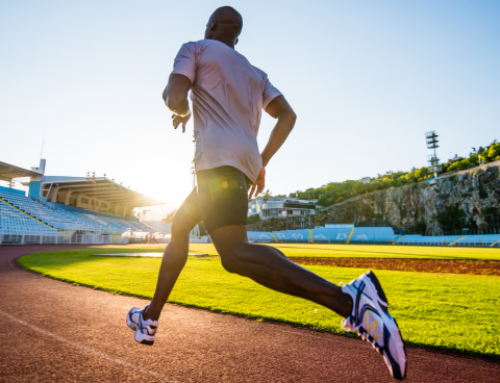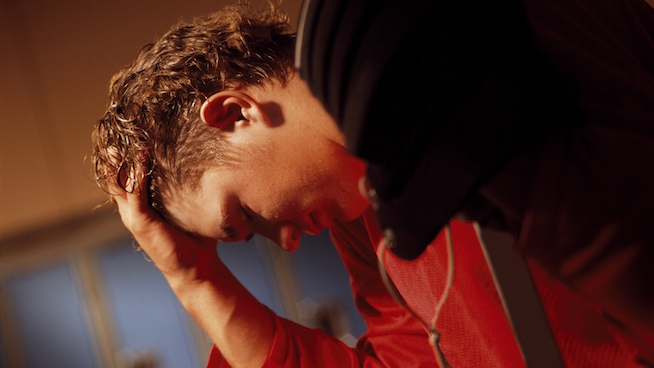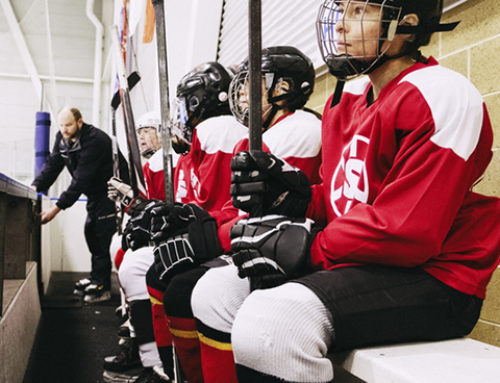The Truth About Altitude Training Masks
![]()
From weekend warriors to the likes of former NFL running back Marshawn Lynch, athletes consistently try their best to get an edge on their competition. That’s why all sorts of “performance enhancers” are flooding the market.
RELATED: Do Altitude Training Masks Actually Work?
One that is currently popular is the altitude training mask. The idea is to artificially create conditions that simulate high altitude to increase oxygen efficiency within the body. It’s called hypoxic training, and it is not a new idea. Its performance-enhancing possibilities have been explored for decades.
But do these masks really work? Let’s find out.
How Breathing Works
Air always flows from high pressure to low pressure. In the human body, we use our diaphragm to change the pressure inside the lungs. When we breathe in, the pressure inside our lungs is reduced to allow for air to flow in. When we breathe out, the opposite will occur: Pressure will rise just like in the balloon, and we expel air outward into the lower pressure of our environment.
When a person is at sea level, these pressure changes happen easily. However, as we move to higher altitudes, the pressure in the air is much lower. This forces our lungs to work harder to create the low pressures needed to take in oxygen. This is why when people climb to the peak of Mount Everest, oxygen tanks are needed. Without them, we cannot take in enough oxygen to survive.
RELATED: Understanding the Benefits and Risks of Altitude Training
Then what is the purpose of robbing oxygen from the body during training? Why would we want to limit how much oxygen we can take in? Well, when humans live at altitude, changes in pressure reduce the amount of oxygen in each breath we take in.
Because of the reduced oxygen content of each breath, we experience a number of adaptations that enhance physical activity. These adaptations are similar to training. They challenge our respiratory system and force it to work better. When our respiratory system is training, it works much more efficiently.
Efficiency is key in the respiratory system. It’s not about trying to get the most oxygen all of the time, it’s about minimizing work while still getting all of the oxygen that the body needs.
The Problem With High-Altitude Training Masks
Training masks do a great job of creating a challenge to the muscles necessary in breathing, however they do not change pressures. These masks limit the air we are able to breathe in and force us to work harder to get oxygen into our lungs, but do nothing to change the amount of oxygen in the air we breathe in.
Breathing muscles such as the diaphragm and muscles that line your rib cage are challenged and can improve their force capabilities. A strong muscle is rarely a bad thing, and when these muscles are strong, they can change the pressures in the lungs much easier. But once the air is in the lungs, we still must follow the rules of pressure gradients, and our training with a training mask has not positively affected this aspect of respiration. We have an overabundance of oxygen in our lungs, and because we are unable to use all of it, we unfortunately, will waste it. Upon the next exhale, all of the excess oxygen will be expelled from our lungs.
When we are actually at altitude, we must overcome a different pressure in order to breathe in. Once the air is in our lungs, we must again overcome this pressure to get this oxygen into our blood stream. Similar to how our muscles are strengthened, when a system is challenged, it will improve. We improve in all of the following areas:
- Improved oxygen absorption
- Increased oxygen carrying capacity
- Improved efficiency through reduced waste
- Increased capillary production to distribute oxygen better
These effects cannot be gained through the use of training masks. These effects will also benefit athletic performance much more than simply increased the strength of breathing muscles.
RELATED: Training with the Elevation Training Mask 2.0
The Takeaway
Elevation masks don’t change anything with inspired air pressures; all they do is simply reduce the amount of air we breathe. Wearing a training mask is the equivalent of trying to run while breathing through a straw. Training with the mask will feel, and consequently be, harder than usual. Much like the example earlier, you will work harder but you will get less out of it. By restricting oxygen, you’re making your body work much harder at any given workload.
The training mask makes you inhale and exhale harder, which improves your diaphragm strength. This will do nothing for your aerobic capacity or endurance. Save your money if you are thinking of buying an altitude training mask because it most certainly does not simulate altitude.
[cf]skyword_tracking_tag[/cf]RECOMMENDED FOR YOU
MOST POPULAR
The Truth About Altitude Training Masks
![]()
From weekend warriors to the likes of former NFL running back Marshawn Lynch, athletes consistently try their best to get an edge on their competition. That’s why all sorts of “performance enhancers” are flooding the market.
RELATED: Do Altitude Training Masks Actually Work?
One that is currently popular is the altitude training mask. The idea is to artificially create conditions that simulate high altitude to increase oxygen efficiency within the body. It’s called hypoxic training, and it is not a new idea. Its performance-enhancing possibilities have been explored for decades.
But do these masks really work? Let’s find out.
How Breathing Works
Air always flows from high pressure to low pressure. In the human body, we use our diaphragm to change the pressure inside the lungs. When we breathe in, the pressure inside our lungs is reduced to allow for air to flow in. When we breathe out, the opposite will occur: Pressure will rise just like in the balloon, and we expel air outward into the lower pressure of our environment.
When a person is at sea level, these pressure changes happen easily. However, as we move to higher altitudes, the pressure in the air is much lower. This forces our lungs to work harder to create the low pressures needed to take in oxygen. This is why when people climb to the peak of Mount Everest, oxygen tanks are needed. Without them, we cannot take in enough oxygen to survive.
RELATED: Understanding the Benefits and Risks of Altitude Training
Then what is the purpose of robbing oxygen from the body during training? Why would we want to limit how much oxygen we can take in? Well, when humans live at altitude, changes in pressure reduce the amount of oxygen in each breath we take in.
Because of the reduced oxygen content of each breath, we experience a number of adaptations that enhance physical activity. These adaptations are similar to training. They challenge our respiratory system and force it to work better. When our respiratory system is training, it works much more efficiently.
Efficiency is key in the respiratory system. It’s not about trying to get the most oxygen all of the time, it’s about minimizing work while still getting all of the oxygen that the body needs.
The Problem With High-Altitude Training Masks
Training masks do a great job of creating a challenge to the muscles necessary in breathing, however they do not change pressures. These masks limit the air we are able to breathe in and force us to work harder to get oxygen into our lungs, but do nothing to change the amount of oxygen in the air we breathe in.
Breathing muscles such as the diaphragm and muscles that line your rib cage are challenged and can improve their force capabilities. A strong muscle is rarely a bad thing, and when these muscles are strong, they can change the pressures in the lungs much easier. But once the air is in the lungs, we still must follow the rules of pressure gradients, and our training with a training mask has not positively affected this aspect of respiration. We have an overabundance of oxygen in our lungs, and because we are unable to use all of it, we unfortunately, will waste it. Upon the next exhale, all of the excess oxygen will be expelled from our lungs.
When we are actually at altitude, we must overcome a different pressure in order to breathe in. Once the air is in our lungs, we must again overcome this pressure to get this oxygen into our blood stream. Similar to how our muscles are strengthened, when a system is challenged, it will improve. We improve in all of the following areas:
- Improved oxygen absorption
- Increased oxygen carrying capacity
- Improved efficiency through reduced waste
- Increased capillary production to distribute oxygen better
These effects cannot be gained through the use of training masks. These effects will also benefit athletic performance much more than simply increased the strength of breathing muscles.
RELATED: Training with the Elevation Training Mask 2.0
The Takeaway
Elevation masks don’t change anything with inspired air pressures; all they do is simply reduce the amount of air we breathe. Wearing a training mask is the equivalent of trying to run while breathing through a straw. Training with the mask will feel, and consequently be, harder than usual. Much like the example earlier, you will work harder but you will get less out of it. By restricting oxygen, you’re making your body work much harder at any given workload.
The training mask makes you inhale and exhale harder, which improves your diaphragm strength. This will do nothing for your aerobic capacity or endurance. Save your money if you are thinking of buying an altitude training mask because it most certainly does not simulate altitude.
[cf]skyword_tracking_tag[/cf]










